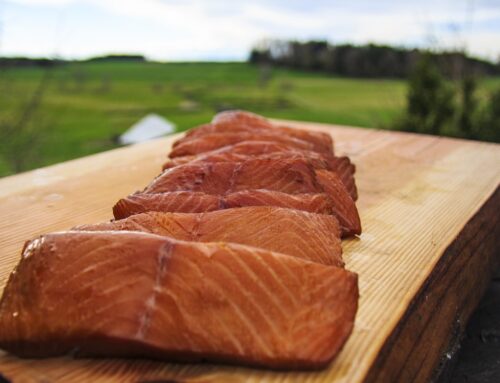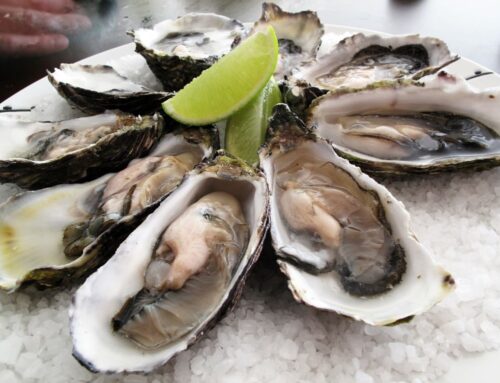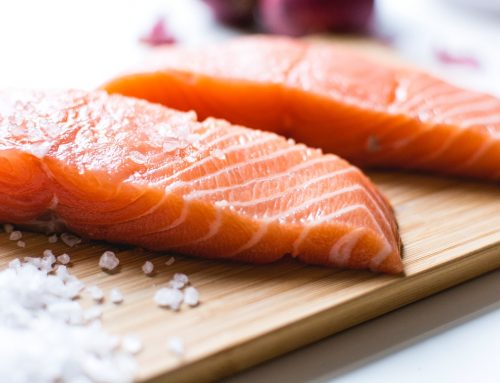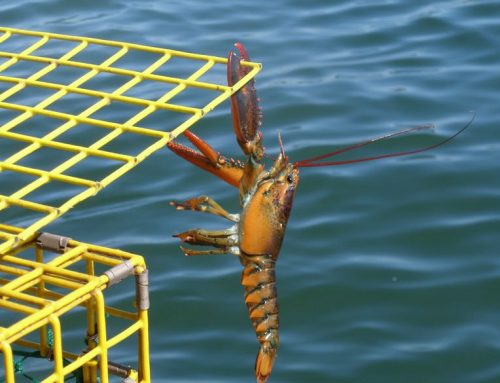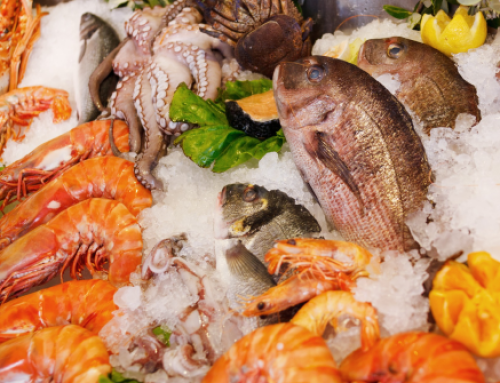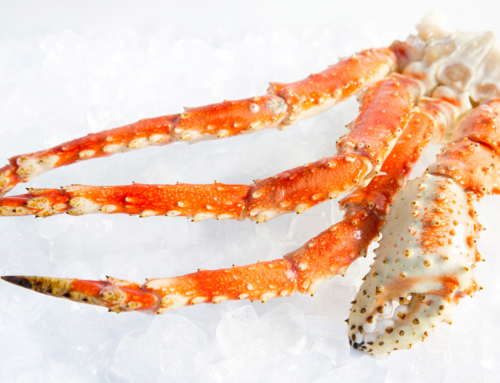The Alaska Department of Fish and Game has published its annual report detailing the salmon harvest from 2018 and the forecasts for 2019, and there are some interesting tidbits for seafood lovers. We’ll get to specific forecasts for each type of salmon and each region of Alaskan fishing waters, but we also wanted to provide some context to help people interpret this report as well as the online news reports that end up citing statistics from this official report from the Alaska Department of Fish and Game.
Looking for just the top-line numbers from the forecast? There are 213.2 million salmon projected to be harvested in Alaskan waters in 2019, including 139 million wild-caught salmon and an additional 74 million from salmon hatcheries. In 2018, there were 115.6 million salmon harvested from Alaskan waters.
If you’re looking for the source material, you can go through the official 100-page report from the Alaska Department of Fish and Game.
How to Interpret the Alaska Fish and Game Salmon Report
The annual Fish and Game salmon forecasts demonstrate that the strength of salmon runs and harvests tend to recur in two-year cycles. In other words, due to salmon’s natural life cycle, the 2019 forecast has a stronger correlation to 2017 than it does 2018. The other thing that the report demonstrates is that Pink salmon, which peaks during odd-year harvests, dominates the overall harvest. The pink salmon harvest was 40.9 million in 2018, but it’s projected to reach 137.8 million in 2019.
So, don’t get fooled by click-bait headlines that suggest the Alaskan salmon harvest is supposed to double this year. If you’re a big fan of Chinook, Sockeye, or Coho, salmon, this statistic is meaningless. On the other hand, commercial restaurants are likely to have a ton of Pink salmon available on the marketplace, so expect to see a lot of salmon specials later this year.
What to Watch For: The Sockeye and Chum Salmon Harvest
The two-year cycle for salmon harvests is also interesting when it comes to sockeye salmon. Sockeye is one of the most popular species of salmon because sockeye feed exclusively on plankton, making this salmon less susceptible to food chain contamination. Now, two years ago, the 2017 harvest of sockeye salmon greatly overperformed its forecast. The 2019 forecast, however, is much more in line with the 2017 forecast than the 2017 harvest.
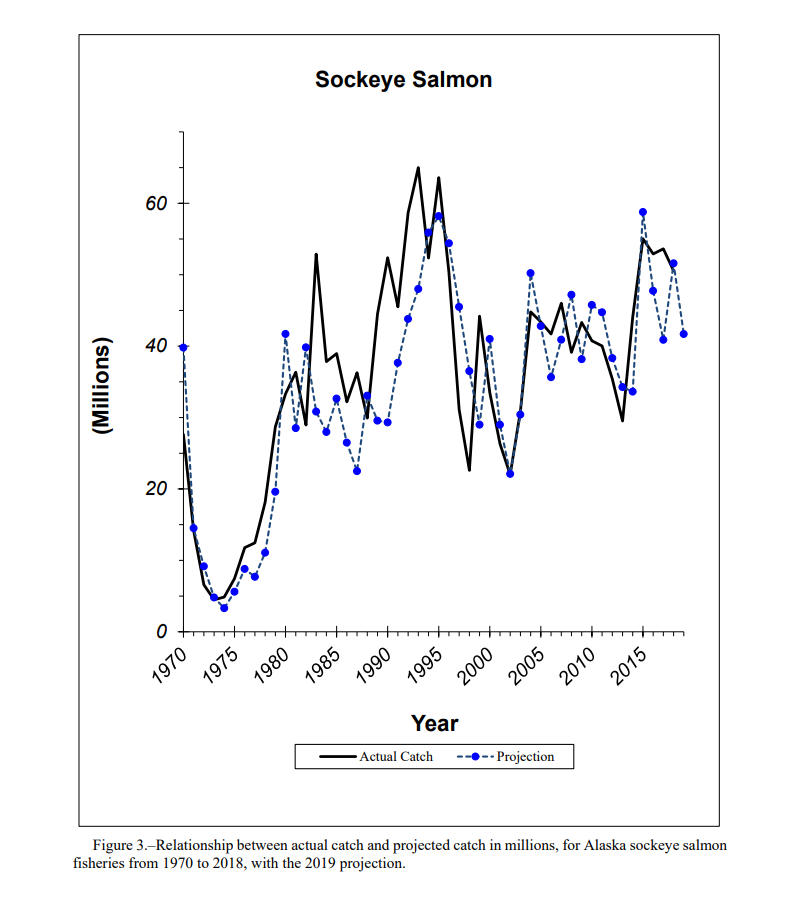
Could it be that the Fish and Game Department is missing something systemic that will allow the harvest to overperform once again, or will we see a regression to the mean that creates a smaller supply of this coveted species of salmon? Should it turn out to be the case that the 2017 harvest was the new normal for odd-year sockeye, that would be an exciting development.
Speaking of exciting developments, Chum salmon has been on a multi-year upward trend line, and the 2019 projections suggest Alaska will easily surpass the previous harvest record set in 2017. Good news for believers that Chum salmon is wrongfully belittled as an inferior-tasting salmon to the Big 3 (Chinook, Sockeye, and Coho). Of course, we’ll also be the first ones to say that these are only projections and nobody has a crystal ball.
2019 Projections for Alaska Salmon Harvests (by species)
Chinook: 112,000
Sockeye: 41.7 million
Coho: 4.6 million
Pink: 137.8 million
Chum: 29 million
2019 Projections for Alaska Salmon Harvests (by region)
Southeast Alaska (43.7 million)
Chinook: N/A
Sockeye: 1.2 million total, 1 million wild-caught
Coho: 2.6 million total, 1.8 million wild-caught
Pink: 19.4 million total, 18 million wild-caught
Chum: 20.6 million total, 3.1 million wild-caught
Central Region: Prince William Sound, Lower Cook Inlet, Upper Cook Inlet, Bristol Bay (105.4 million)
Chinook: 73,000 total, 45,000 wild-caught
Sockeye: 31.9 million total, 30.4 million wild-caught
Coho: 984,000 total, 756,000 wild-caught
Pink: 68.3 million total, 25 million wild-caught
Chum: 4.2 million total, 1.8 million wild-caught
Westward Region: Kodiak, Chignik, South Peninsula, Aleutians, North Peninsula (61.5 million)
Chinook: 38,000 total, all wild-caught
Sockeye: 8.6 million total, 8.2 million wild-caught
Coho: 759,000 total, 734,000 wild-caught
Pink: 50.1 million total, 43.5 million wild-caught
Chum: 2 million total, 1.9 million wild-caught
Arctic Region: Yukon-Kuskokwim (2.6 million)
Total 1 4 330 50 2,190 2,575
Chinook: 1,000 total, all wild-caught
Sockeye: 4,000 total, all wild-caught
Coho: 330,000 total, all wild-caught
Pink: 50,000 total, all wild-caught
Chum: 2.2 million total, all wild-caught
Take note of our Affiliate Relationships that may exist with this page and companies listed on it.


